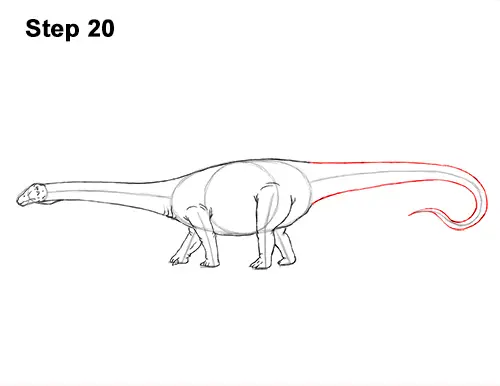
Step 20: Use the long line on the right as a guide to draw the Diplodocus's tail. Follow the path of the guide and lightly draw the top edge of the tail first. The farther along the guide you go, the closer your final line should get to the guide. This will form a thin tip. When you get the top edge of the tail right, darken the line. The tip of the tail should be very thin compared to the thick base near the dinosaur's body. Now draw the bottom edge of the tail the same way. First pick up the line for the body where you left off and continue drawing it toward the right. Then follow the path of the guide as you draw the curved bottom edge of the tail. Diplodocus had very long tails, so if you have room on your paper, you can make yours even longer if you'd like.
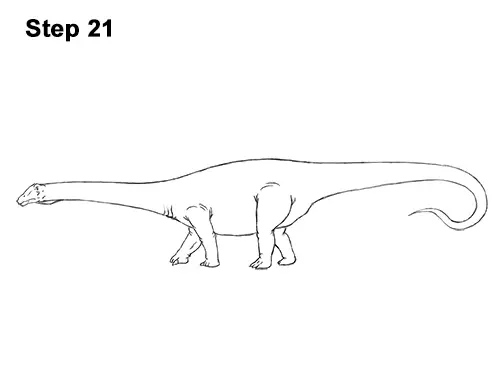
Step 21: For a cleaner look, erase as much as you can of the initial guide lines. Don't worry about erasing all of the guides. It's okay to leave some behind. Re-draw any final sketch lines you may have accidentally erased.
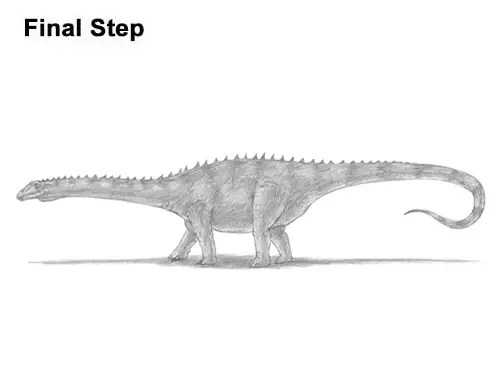
Final Step: Add some shading to your Diplodocus dinosaur drawing for more detail. No one is exactly sure what Diplodocus looked like (some dinosaurs even had feathers!), so you can shade your drawing however you'd like. You can even color it! For a simple shading technique, like this one, just use a medium value across the whole body. Add the value lightly at first, and then gradually build up to the level of darkness that you want. For a more detailed guide on how to shade, check out this tutorial: How to shade.
Diplodocus are thought to have had spikes along their necks, backs, and tails, so draw a row of them along the top edge of the entire body. The spikes are basically tiny triangles that are shaded in using a dark value.
Add more value throughout the dinosaur's body to create shadows. These shadows will give the figure more dimension and volume so that it doesn't look so flat. Pick the direction of the light source when shading so that the shadows are consistent with it. Vary the pressure on your pencil to get different degrees of tonal value. Don't worry about shading too smoothly; the rough value gives the Diplodocus's skin texture.
If you'd like, you can add more value to your drawing to give the dinosaur a skin pattern. For a stripe-like pattern, just add thin sections of darker value along the top edge of the entire body. Shading can be time-consuming, so be patient and take breaks.
Add a cast shadow underneath. This helps ground the dinosaur so it doesn't appear to be floating. Don't forget to pause the video after each step to draw at your own pace.
Thanks for visiting! Subscribe to the How2DrawAnimals YouTube Channel for a new tutorial every week.
To learn how to draw popular cartoon characters, visit EasyDrawingTutorials.com.
RELATED TUTORIALS
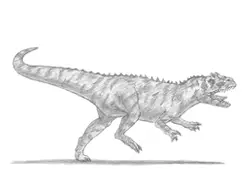 |
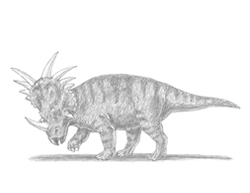 |
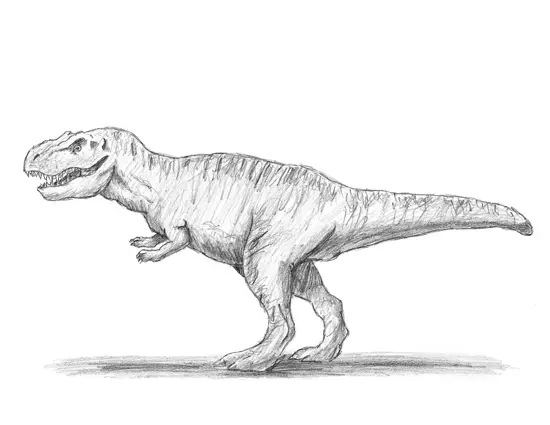 |







